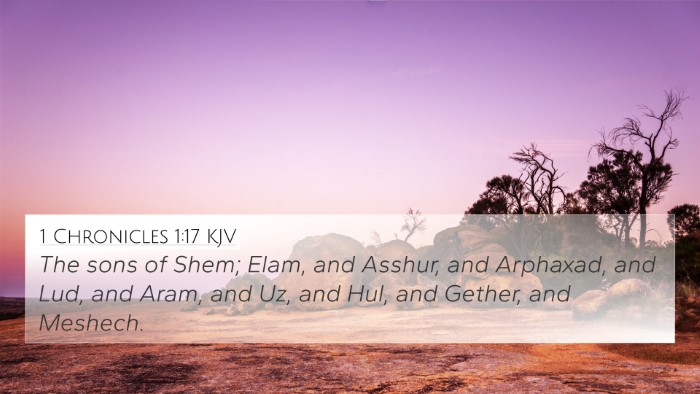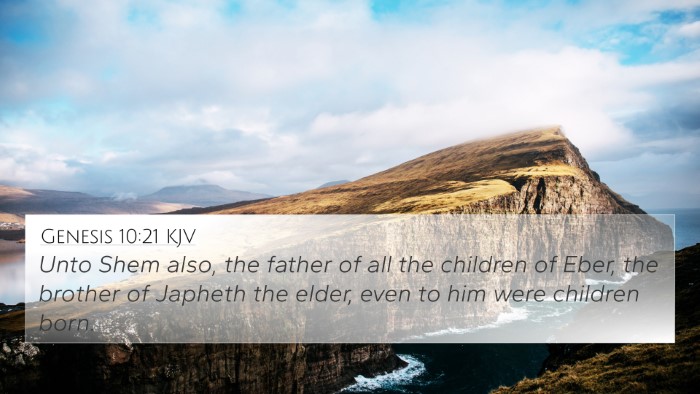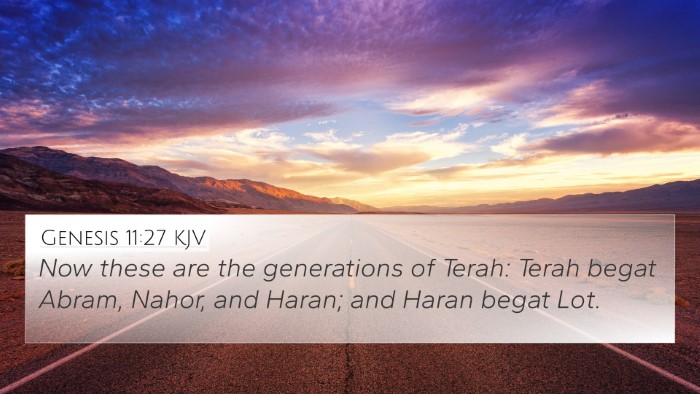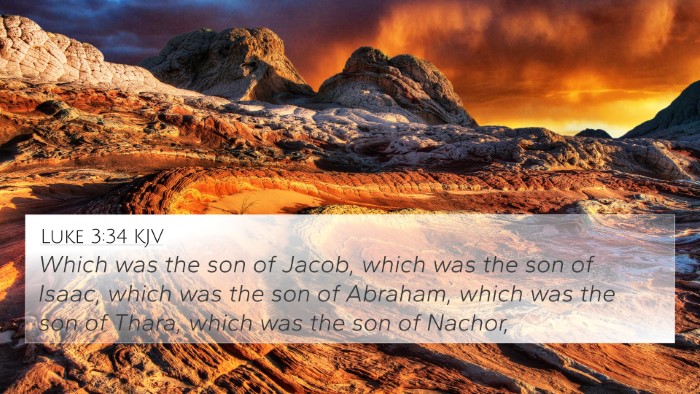Understanding Genesis 11:10
Verse: Genesis 11:10 states, "These are the generations of Shem: Shem was a hundred years old, and begat Arphaxad two years after the flood."
Summary of Meaning
The verse serves as an important genealogical entry, linking Shem, one of Noah's sons, to future generations. It emphasizes the continuity of the human lineage, especially after the flood, and serves as a pivotal point in the narrative leading to the lineage of Abraham. The mention of Shem’s age at the birth of his son Arphaxad marks significant milestones in biblical history and relationships, reaffirming God’s covenant with humanity post-flood.
Insights from Commentaries
- Matthew Henry: Henry emphasizes the theological implications of Shem’s lineage, linking it to God’s plan of redemption. The genealogy highlights the faithfulness of God in preserving a remnant through Shem, leading to the chosen lineage of Abraham and eventually Christ.
- Albert Barnes: Barnes notes the shift from the judgments during the flood to the restoration of humanity through Noah’s descendants. This genealogy serves to establish a connection between Shem and the nations that arise from him, including the Hebrews, crucial for understanding the Old Testament narrative.
- Adam Clarke: Clarke elaborates on the particular significance of Arphaxad being born two years after the flood, indicating the establishment of families and societies anew. He provides insights into the names mentioned in the genealogies and their meanings, linking them to broader biblical themes.
Cross-References and Thematic Connections
Genesis 11:10 is connected to several other biblical passages that help deepen our understanding of its significance:
- Genesis 9:26-27: This passage speaks to the blessings of Noah upon his sons, indicating the importance of the lineage that follows.
- Genesis 10:21-32: The Table of Nations introduces the descendants of Noah, establishing the geographical and spiritual spread of humanity.
- Luke 3:36-38: In the genealogy of Christ, Shem is acknowledged, affirming the line of promise leading to Jesus.
- Hebrews 7:14: The reference to Jesus being from the tribe of Judah positions Shem’s lineage as central to the narrative of redemption.
- Romans 5:12: The theological implications of sin entering the world through one man connect back to the narrative surrounding Noah and Shem.
- 1 Chronicles 1:24-27: This reiterates the genealogical line from Shem to the ancestors of Israel, reaffirming the importance of this family line in biblical history.
- Acts 17:26: Paul speaks of God making all nations from one blood, resonating with Shem's role in the post-flood world.
The Importance of Genealogies in the Bible
Genealogies throughout Scripture contain rich theological significance. They illustrate God’s covenant promises and His sovereignty over history. The line from Shem to Abraham illustrates how God preserves His purposes through specific families and individuals, making these verses crucial for understanding the overarching story of the Bible.
Conclusion
Genesis 11:10 offers a glimpse into God’s unfolding redemptive plan through the genealogy of Shem. By connecting this verse with other Scriptures, readers can better appreciate the continuity of God’s promises and the significance of familial lines in biblical narratives.
Further Study Tools
For deeper understanding and study, consider utilizing:
- Bible concordance to track genealogical references
- Bible cross-reference guides to discover thematic connections
- Comprehensive cross-reference materials for a detailed analysis of scriptural ties
Using Cross-References Effectively
To find relevant cross-references:
- Utilize a study Bible that marks related verses.
- Explore commentaries that discuss genealogies and their implications.
- Make use of online tools or databases dedicated to Bible study.






